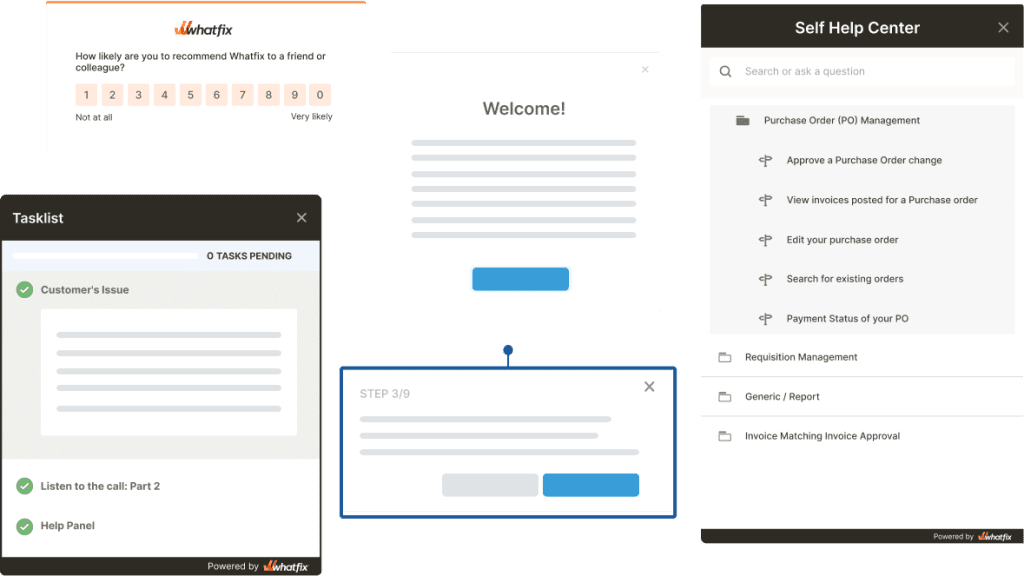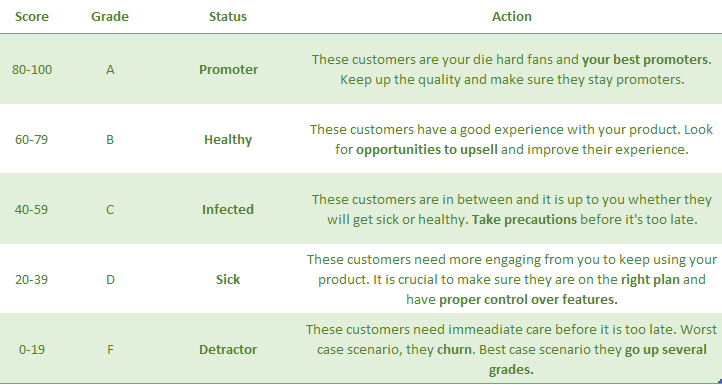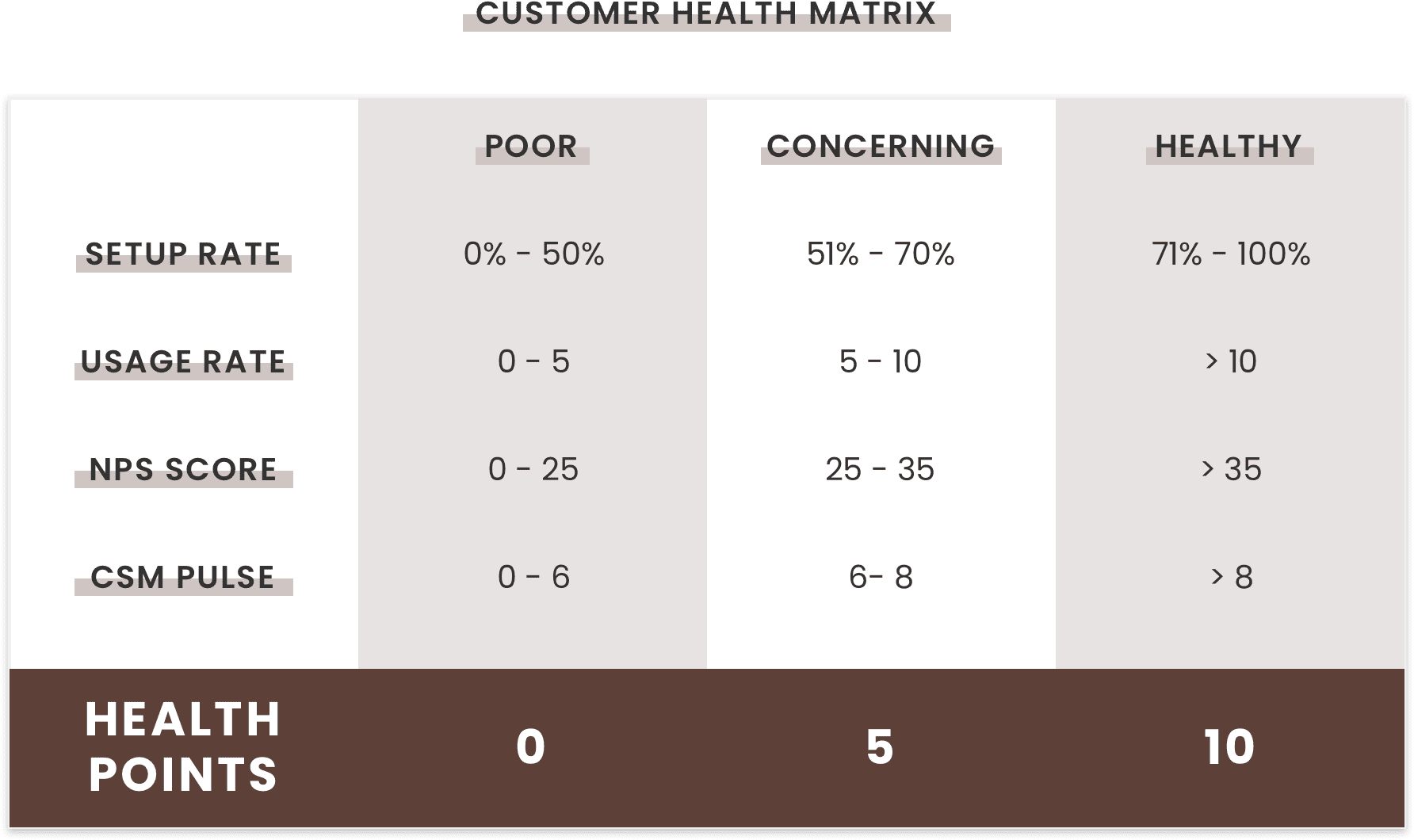What Is Customer Health Score? How to Measure It
- Published:
- Updated: July 23, 2024


Regarding customer satisfaction, it’s hard to build loyalty when you’re always playing defense. While trying and fixing mistakes always a good idea, waiting for customers to come to you with a problem will leave them feeling frustrated, uncared for, and disappointed.
Poor customer service and weak relationship building are two leading causes of customer churn. And while preparing a tremendous win-back marketing strategy might help you bring a few of those lost customers back, you’ll waste money trying to win over an audience you’ve already upset.
A better approach is to deliver a superior customer experience the first time around. You can shift your engagement strategy to keep customers from leaving by gauging customer satisfaction before a customer churns.
The secret to taking a proactive approach to customer satisfaction is measuring each customer with a customer health score.
What Is a Customer Health Score?
Customer health score tells how “healthy” or “unhealthy” a customer is. Healthy customers are happy with what you’re offering, they’re consistently purchasing, and they might even recommend your brand to a friend or colleague.
On the other hand, unhealthy customers (or “at-risk” customers) are growing bored with your offerings or find that what you’re providing doesn’t meet their expectations in one way or another. If things don’t turn around soon, they might move on to a competitor.
A customer’s health score is determined based on your company’s unique criteria (we’ll touch on this a bit more later). Customers gain or lose points based on certain behaviors or actions you’ve determined indicate customer happiness.
How to Calculate Your Customer Health Score
Here’s how to start calculating your customer’s health scores.
1. Define customer health for your company
Customer health will differ from company to company. The first step in calculating customer health score is determining what a healthy customer looks like to you.
Determine what is most important to achieving customer loyalty. This could be the number of account logins, features used, or number of profiles under an account, or a number of other behaviors that show your customer is engaged.
Customer health may also be a combination of actions or an absence of a particular behavior.
2. Segment your customer data
To accurately measure customer health scores, you want customer data to be separate. Segment customer data individually, but also take a look at recurring patterns that may appear based on particular groups of customers.
Tagging customers based on things like job title, geographic location, age, or other demographics can help you see if particular groups of customers have consistently higher or lower customer health scores.
3. Determine customer actions that impact health score
Establish the behaviors or activities that will impact your customer health score and by how much. You’ll want to include both positive and negative actions.
For example, a customer’s health score might go up every time they log in to their account. They might start to lose points for every day their account is inactive. Upgrading their plan or purchasing add-ons might add a significant number of points to their score while reaching out for support could deduct them.
Start by making separate lists of all your positive and negative behaviors.
4. Assign an impact score to each action
With your list of customer actions, start to prioritize which influences customer satisfaction and loyalty the most. Those items should have the highest score. Give actions that are less indicative of customer happiness a lower score.
5. Determine your customer health scale
Your customer health scale and the score of each action should work hand-in-hand. The points customers receive or lose should accurately move them between categories.
For example, if you decide you want your health scale to run 1 to 100, but it’s difficult for your customers to acquire points based on the impact scores you’ve assigned, you might find that many of your customers are falling into too low of a category.
On the other hand, if your point system is skewed in the other direction, relatively low-impact actions could push customers into unhealthy categories.
Find a health scale that works for your team and update scores to match.
6. Determine your actions for each category on your health scale
Last, you want to determine what steps your team will take to connect with each health scale category.
For example, if you’ve chosen to go with a color-coded scale, establish clear action items to follow for each group. What special retention strategies will you implement for your “red” group compared to the higher levels? Will customers in your “green” category receive any special treatment or bonuses?
4 Benefits of Measuring Customer Health
Measuring customer health helps build stronger relationships with your customers. Here’s how.
1. Uncover your best customers
Your “healthiest” customers are your brand advocates. They love your brand, what you have to offer, and they’re excited to tell their friends and colleagues about it. Brand advocates also spend more and have a higher lifetime value.
Keeping these relationships strong is your key to growth. Knowing who your top customers are can help you identify the individuals to reward for their excitement and loyalty
2. Reduce or avoid customer churn
Customer churn is like having a revolving door of buyers. It’s nearly impossible to grow if your customers aren’t sticking around and buying again. Customer acquisition is expensive as is, and needing win-back marketing strategies only makes those costs higher.
Using customer health score can help you identify the issues and solve them before a customer churns. When you know when a customer might leave, you can implement strategies to keep them around.

3. Discover success and failure patterns
Identifying patterns makes it easier to predict what will happen in the future. If you are able to discover patterns in your wins and losses, you can better prepare for them to happen (or control whether they happen at all).
Measuring customer health, especially over a customer’s lifetime, can help you see when your users are most likely to leave. Identifying events, timelines, or other patterns that may push a customer to become more unhappy with your product can give you the insight you need to refine your retention strategy.
4. Identify upselling and cross-selling opportunities
Knowing the right time to offer new or additional products or services can be tricky. Using your customer health score can make it easier to identify when your customer might be more likely to buy something new.
You can use customer health scores to identify happy customers who might be interested to see what else you have to offer. It can also come in handy for finding customers who might feel like your product is lacking and showing them add-ons or upgrades that might fill the gaps they’re experiencing.
3 Types of Customer Health Score Scales
Here are three simple types of customer health score scales to consider:
1. Color code scale
A color code scale groups customers into one of three categories based on their health score:
- Green: Customers who are happy with your offerings and not actively considering switching
- Yellow: Customers who are neutral about your offerings and while not actively looking to switch, they could be swayed by a competitor
- Red: Customers who are unhappy with your offerings and actively looking for a change
This type of score scale is easy to read and has clear group boundaries. It’s a simple system to implement and requires minimal training to get your team involved in using the system.
However, the range within each group can vary pretty drastically. For example, your yellow category may include customers who are very happy with your offerings but aren’t ready to be brand advocates and customers who are on the verge of leaving. These customers would need very different retention approaches to keep them happy.
2. Grade scale
A grade scale assigns a letter grade to each customer based on their health score. For example, your grade scale might look like this:
- A – Excellent
- B – Good
- C – Average
- D – Poor
- F – Very Poor
More categories can help you create more targeted retention plans for each customer group. The grading scale is also familiar to many people, so it’s easy to follow and implement.
3. Percentage scale
Percentage scales use a number between 1 and 100 to identify customer health. A 1 customer health score would be a very “unhealthy” customer, while a 100 score would be a loyal brand advocate.
Using a percentage scale is less visual than color coding or a grade scale, but it does prevent your team from needing to convert points into other categories. This can save time and confusion.
10 Customer Health Score Metrics
Here are 10 customer health score metrics to measure to get you started on your journey to higher customer satisfaction.
1. Overall product usage
Overall product usage is a broad category that measures how frequently your customers engage with your product. It can include popular metrics like:
- Customer onboarding completion rate
- Product adoption
- Number of sessions
- Length of sessions
2. Depth of usage
Depth of usage looks a bit deeper than overall product usage by measuring how extensively your customer uses your product. This might cover:
- Feature adoption rate
- Time spent using the product
3. Account growth
Account growth tells you how much the customer account has grown over the customer’s lifetime. For one-person accounts, this might cover how much that customer has purchased or the amount of data stored on your platform.
For team accounts, growth might also include the number of users or accounts added.
4. Number of renewals
Number of renewals counts the number of times your customer has chosen to renew their account. This is particularly helpful for SaaS and other subscription-based businesses.
5. Number of upsells
Number of upsells tells you how many times a customer has purchased an add-on or upgraded their account.
6. Customer engagement
Customer engagement is another broad metric category that covers:
- Net promoter score
- Customer lifetime value
- Customer satisfaction
7. Need for support
A customer’s need for support measures the frequency with which they reach out for help or assistance. This should cover all instances where your customer reaches out, whether that is through formal support ticket channels or via social media.
8. Product feedback
Product feedback metrics are used to identify how your customer feels about your product or brand. You can use metrics similar to customer engagement, but you can also dig deeper with metrics like:
- Bug reporting frequency
- Product requests
9. Invoice history
A customer’s invoice history can give you a clear picture of how often your customer is buying and what they’re purchasing. You can use this to identify patterns, dips, or changes in how the customer buys over time.
10. Overall relationship
Measuring your overall relationship with a customer likely requires multiple metrics. Determine what metrics are most likely to indicate a positive relationship between your customer and your brand, and use those numbers to build a customer profile that accurately showcases your overall relationship.
How to Improve Customer Health Score
Here are five ways to improve customers’ health scores.
1. Get feedback from customers
What better way to learn what customers want than to go straight to the source? Get feedback from customers on where you’re failing to meet their expectations and what they’d like to see instead.
Collect customer feedback through one-on-one meetings, sending customer satisfaction surveys, or reading reviews or conversations happening on third-party sites.
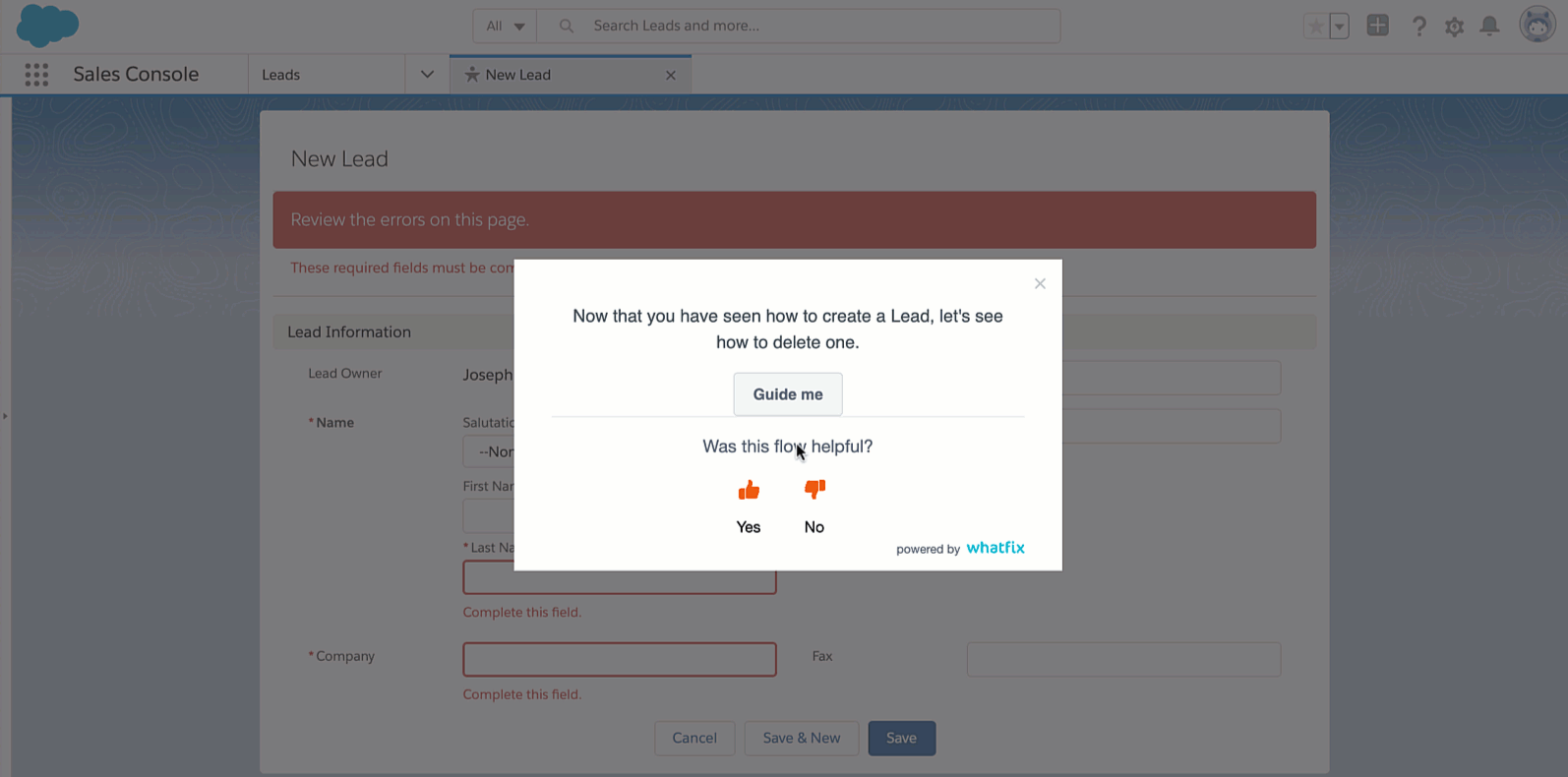
2. Identify product or service usage patterns
Knowing the natural ebb and flow of how customers engage with your product or service can help you adjust your customer health score to reflect those changes.
For example, if you have a service that gets more use during certain times of year (such as during tax season or right before the holidays), it could skew customer health scores. Knowing these patterns can help you identify if a customer is actually becoming less engaged or if they’re just experiencing a slow period.
3. Continually train your customer success team
Delivering excellent customer success support keeps customers and end-users engaged and satisfaction levels rising. Make sure your team is capable of answering customer questions.
Providing continuous training to your support team will help them stay on top of any product changes or updates. It can also give them the tools they need to better understand frequent customer issues and the best ways to solve them.
4. Drive engagement with in-app guidance
In-app guidance can help users get the most out of your product. With tools like Whatfix that offer step-by-step instructions built right into the app, your users will have their questions answered quickly and be able to learn the best ways to use your platform from the very beginning.
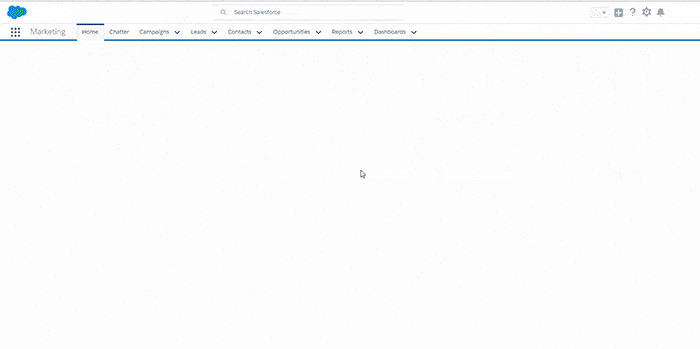
5. Adopt a customer success platform
A customer success platform can give you a holistic view of your customer experience through tracking, analytics, and reporting. Use your customer success platform to improve training and onboarding materials or to measure how well your success team is supporting your customers.
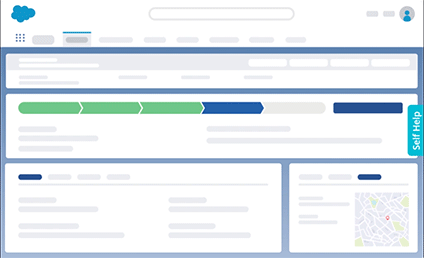
A digital adoption platform like Whatfix can give you all the tools you need to monitor and improve your customer health score. With in-app guidance, analytics, and more, you can improve your customer experience and start to see happier, healthier customers.
Learn more about how Whatfix can help improve your customer health score today.
Thank you for subscribing!
